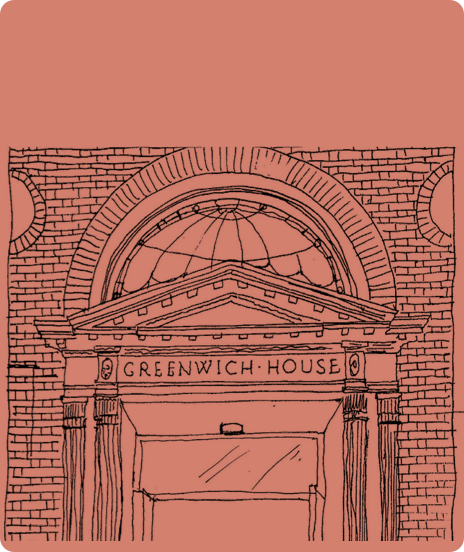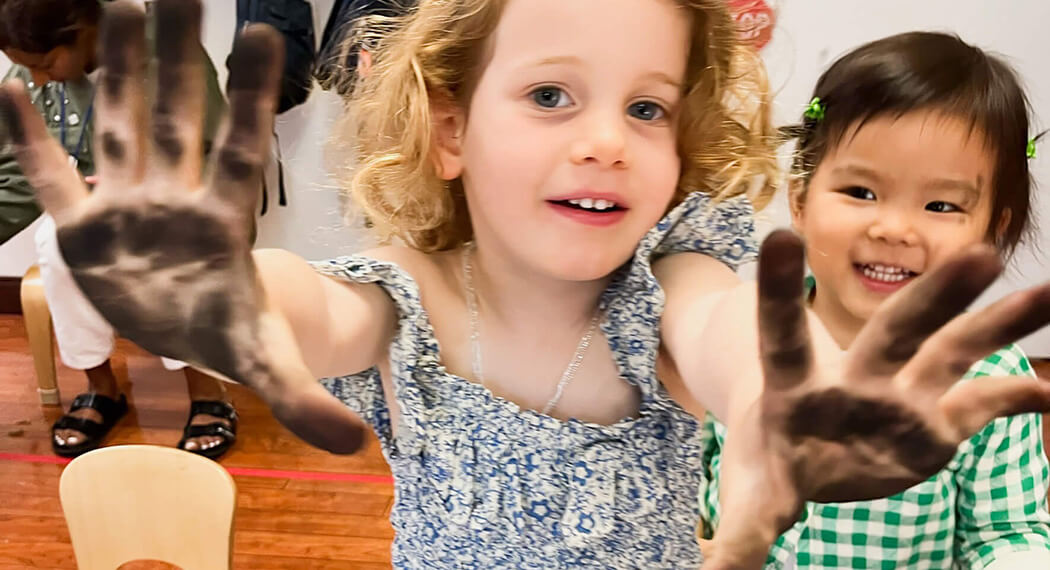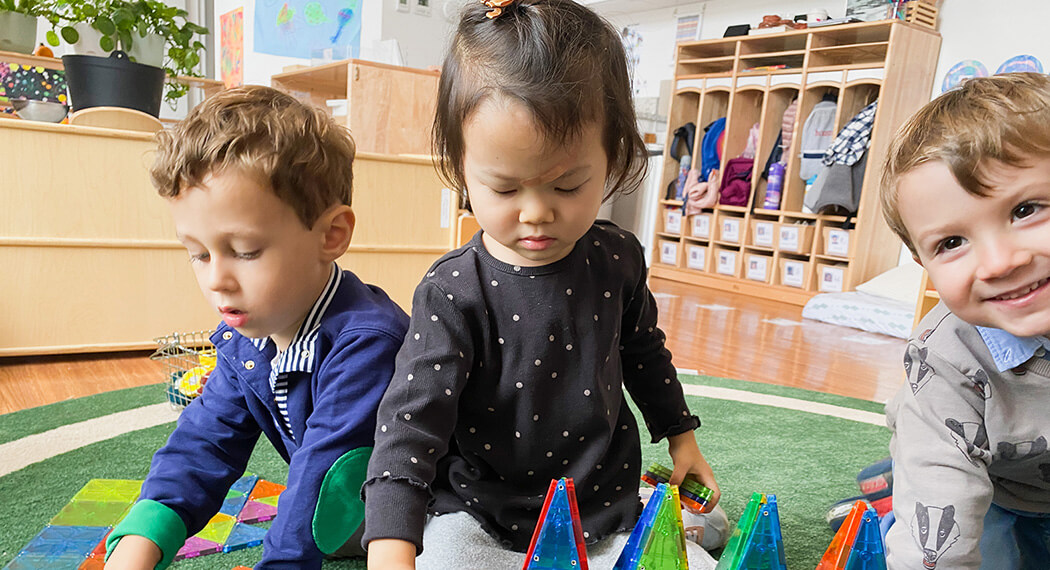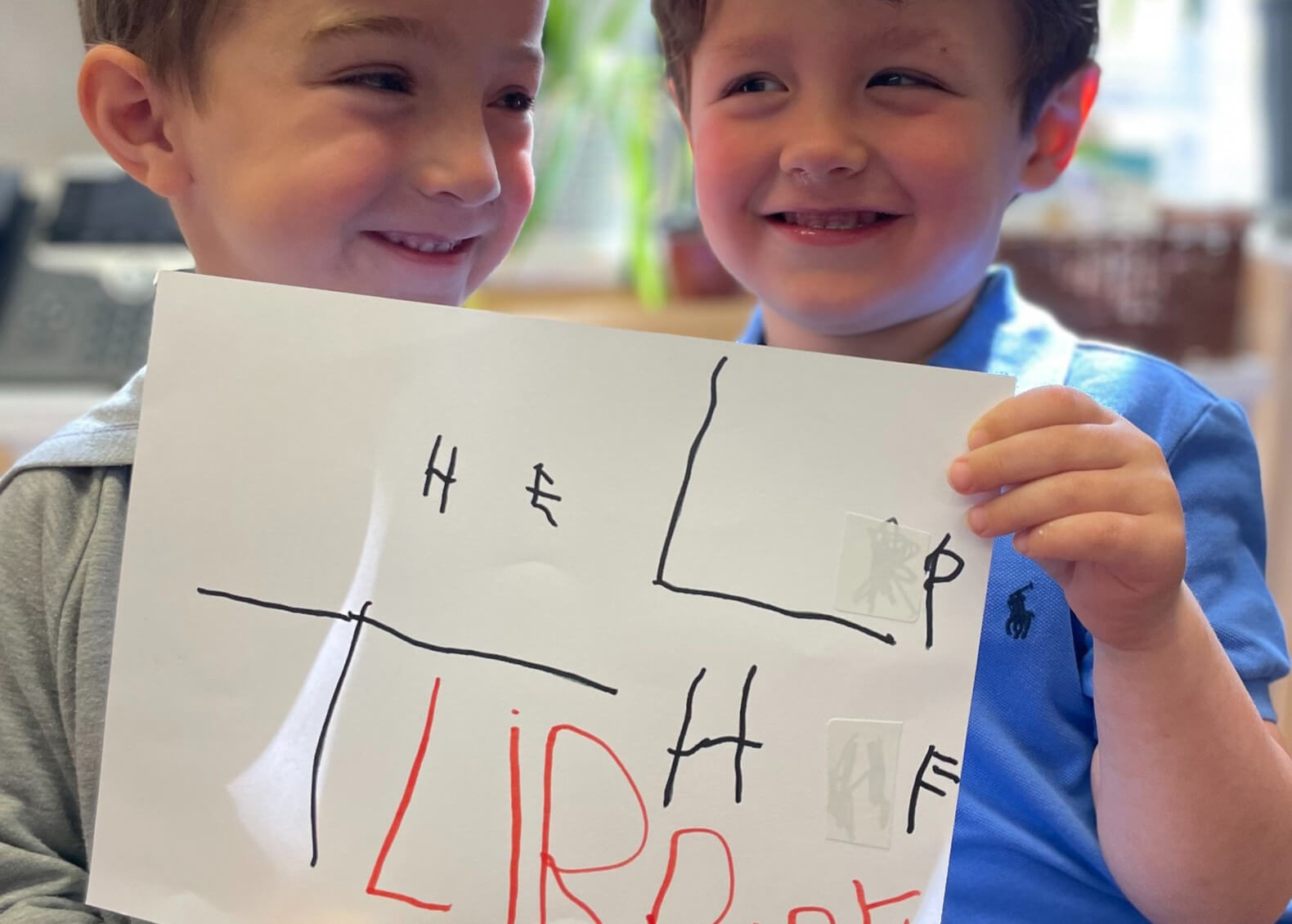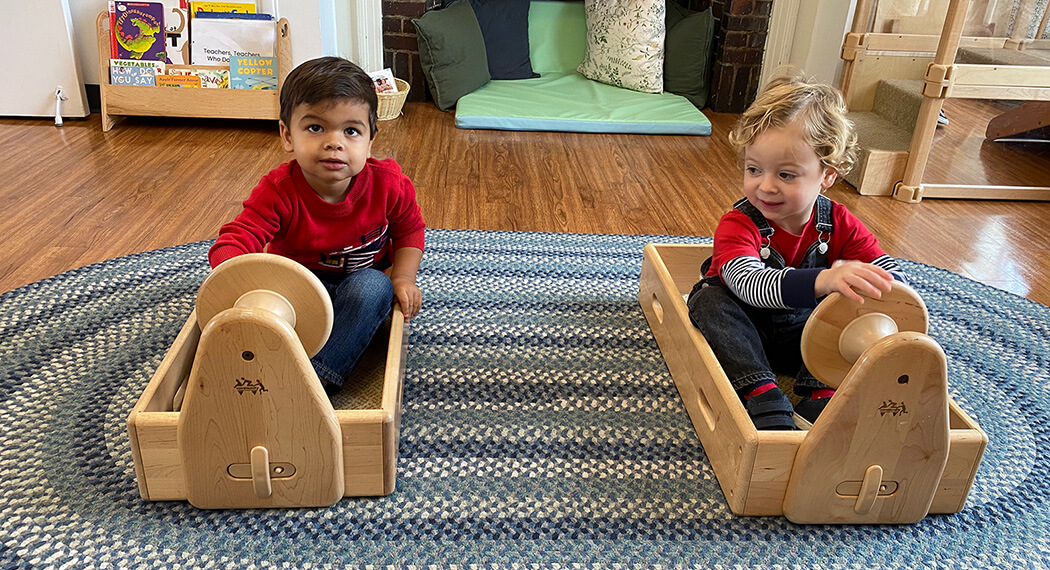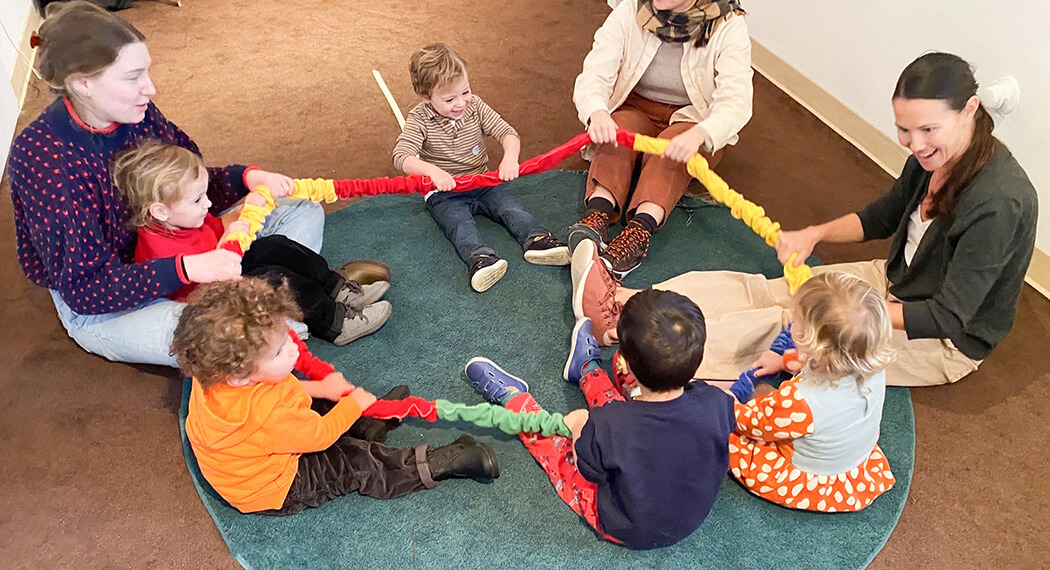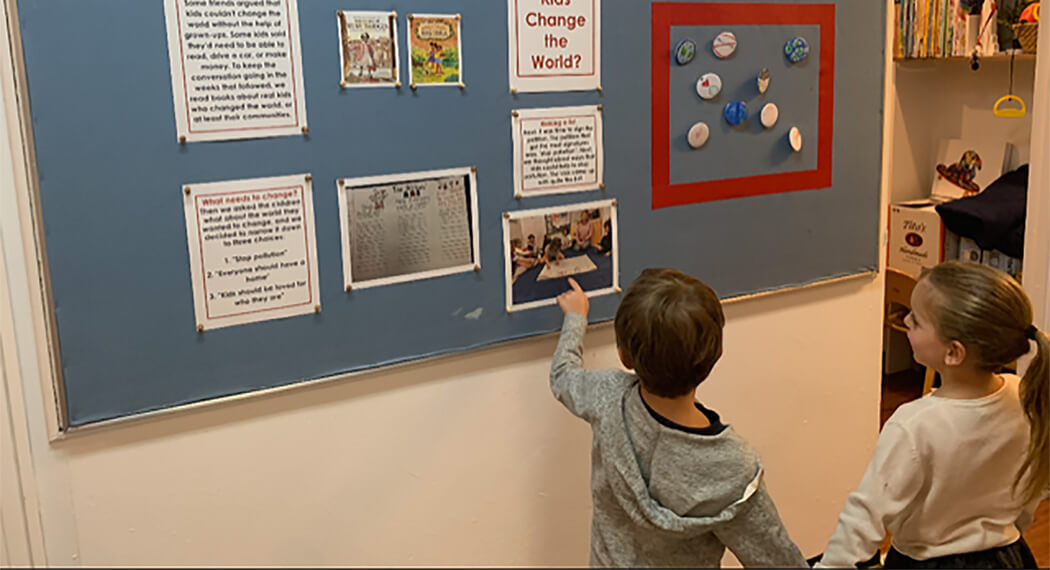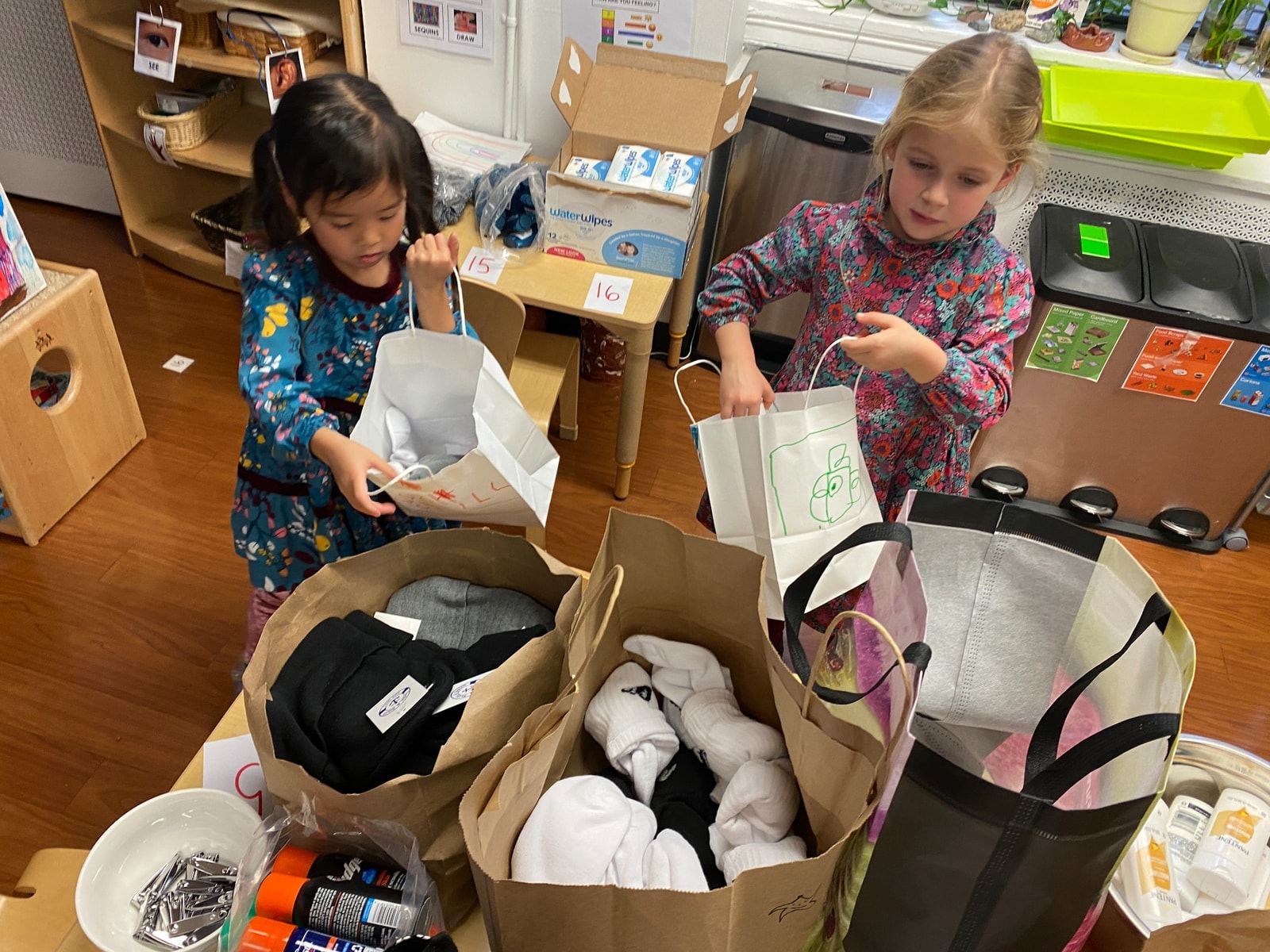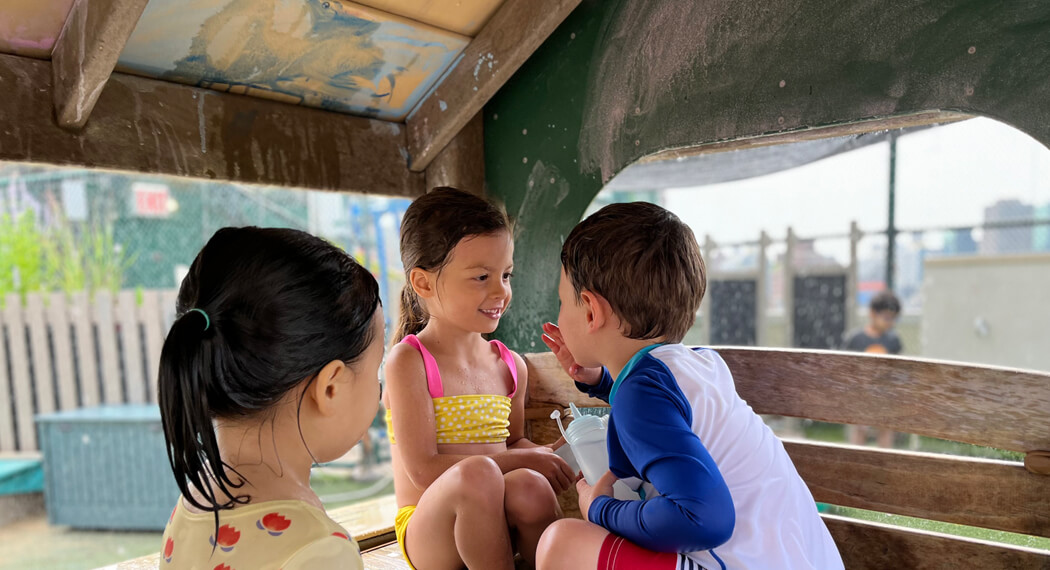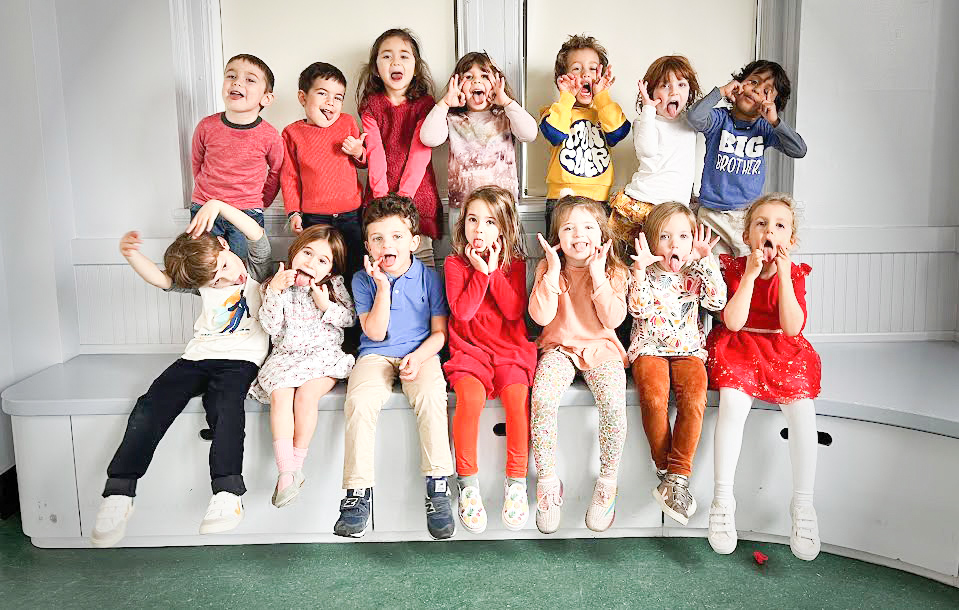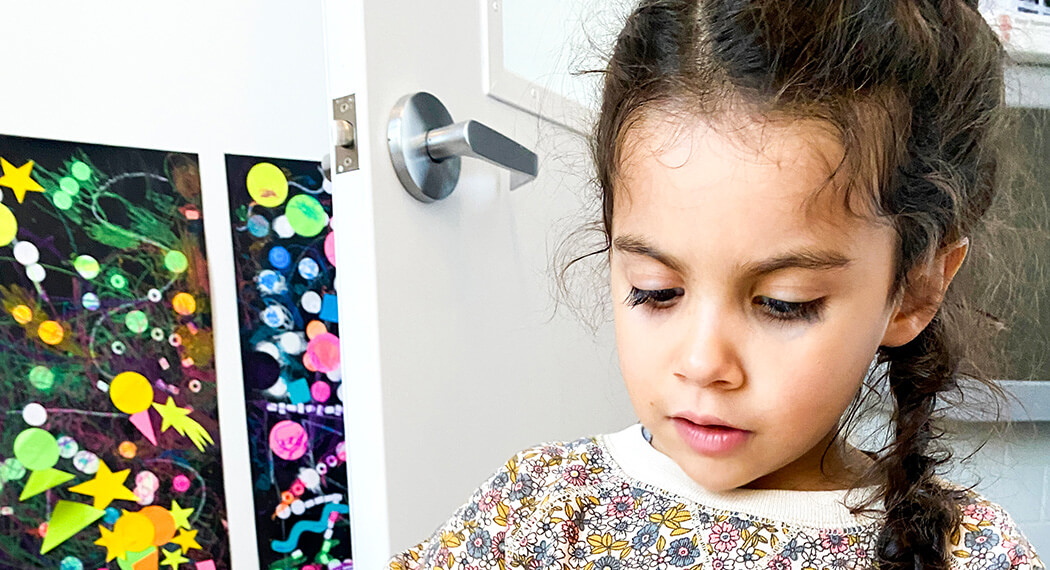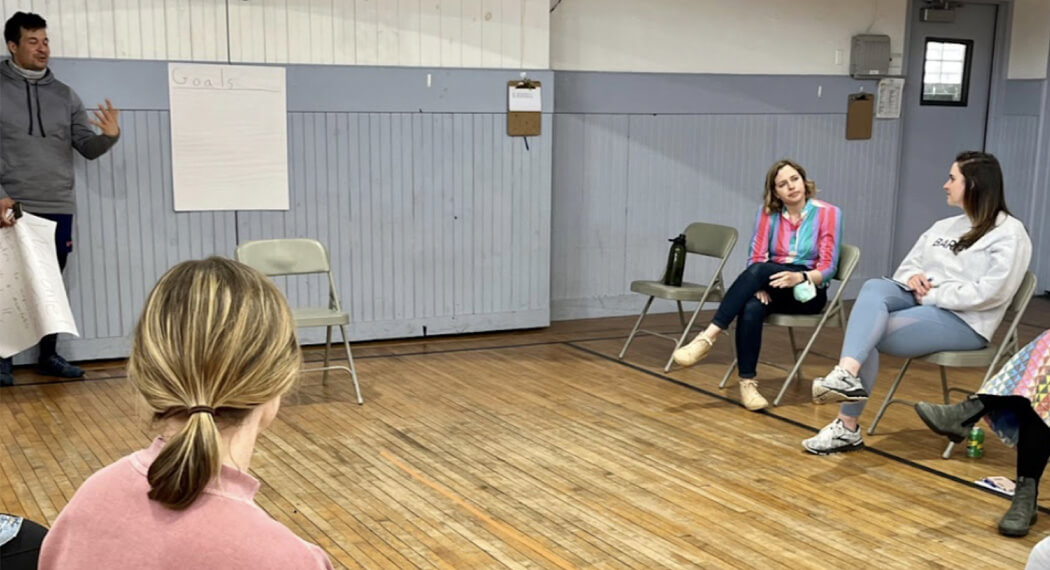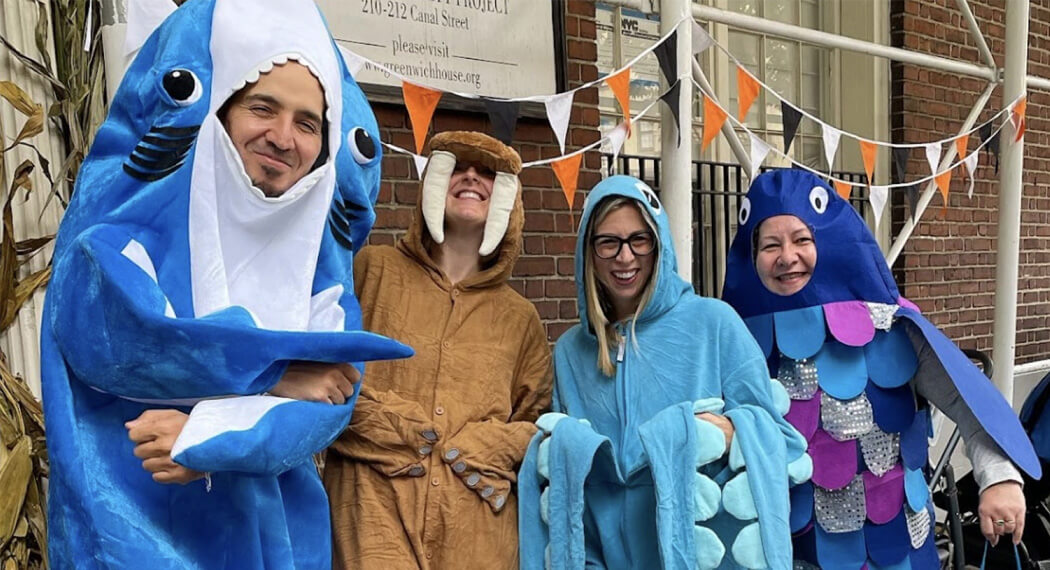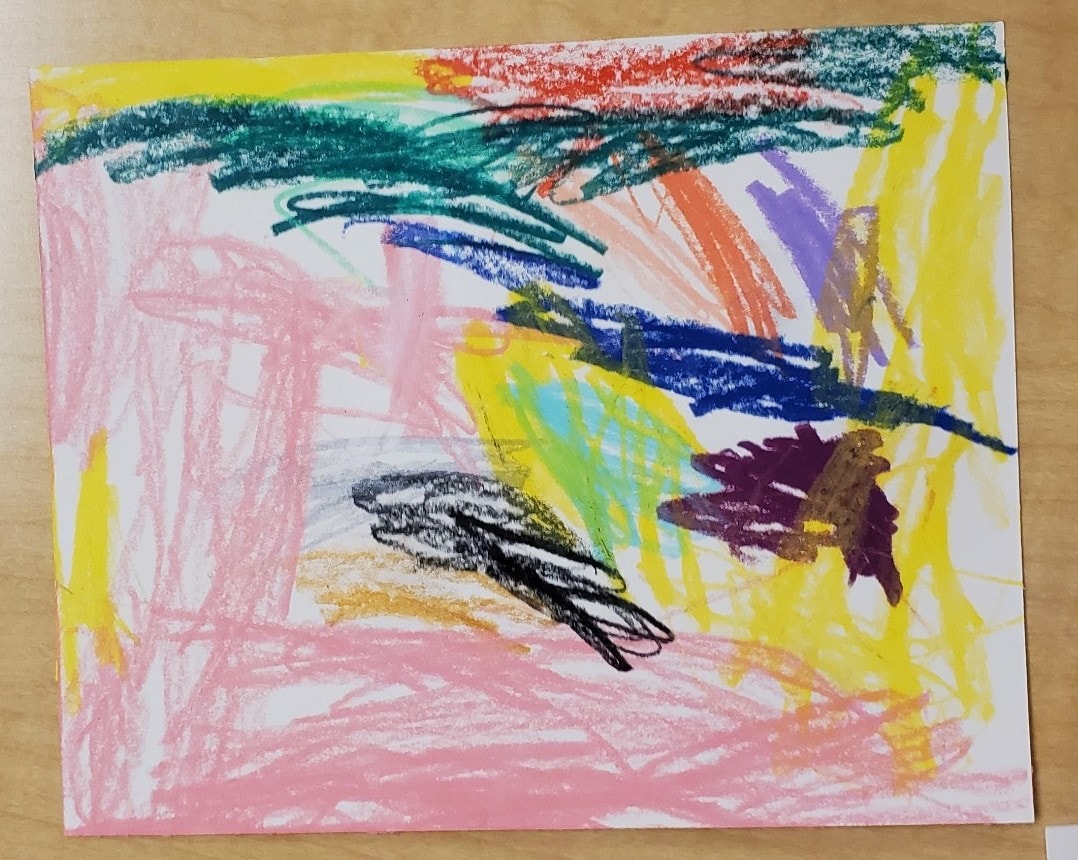Art encompasses so many areas of development. It’s a form of communication and a way to express one’s ideas and feelings. It can be a social experience. Artists might work collaboratively on a project, or they might ask a peer for advice or help when creating a piece of art. It supports both fine and gross motor development, depending on whether the art is made flat (like on a table) or upright (like on an easel). Art also provides a way for students to connect to the curriculum, as we described in our Back to School Night presentation on the moon.
Art is open every day in the Green Room, in various forms. Over the next two Storyparks, let’s dive more deeply into two specific forms of art: drawing and writing.
Drawing
The Tools
We provide a range of drawing materials. Thicker drawing materials, like stabilos, are easy for all students to grasp and make marks with. Thinner drawing materials, like colored pencils, require students to modulate the force they use and encourage a more refined grip.
We tailor the tools we put out to our goal(s) for the art project. If our goal is an exploration of color, we might put out colored pencils, crayons, stabilos, andpaint sticks. If our goal is working towards representational art, we will put out materials that encourage more precision.
The Goals
Fine motor development
As students create drawings at a table, they work on their fine motor skills. They gain practical skills like gripping their art tool correctly, stabilizing their hand on the table, and building stamina in the muscles of their fingers and wrist.
Moving Towards Representational Art
As students’ fine motor skills develop, they become more able to create representational art. This is when an artist is able to reproduce something they see or imagine onto paper. Thinking in terms of geometric shapes is a great beginning place for representational art. If a student says, “I don’t know how to draw that,” a teacher will usually prompt them by asking, “Okay, what shapes do you see? What colors do you notice?”
Intentionality & Independence
In order to create representational art, an artist needs to be intentional about the marks that they make. This usually means having a plan. Teachers model this at the art table by saying things like, “I’m going to draw a….” or, “I want to make a…”
Students are building independence in their art. When they feel stuck, we encourage them to:
– Look at picture examples (books, pictures in the classroom, printed photos)
– Ask a friend for help
– Notice shapes and colors
– Have a practice page. This is helpful for students who worry about their final piece of art being “perfect.”

